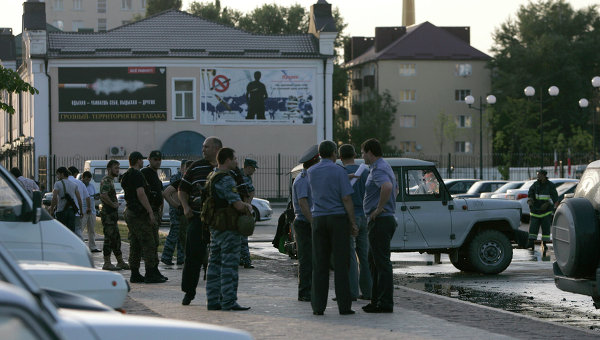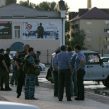
The Russian Question and the Return of Suicide Bombers in the North Caucasus
Publication: Eurasia Daily Monitor Volume: 7 Issue: 131
By:

After a six-month lull, the Chechen capital Grozny has once again experienced another suicide bombing attack. On the evening of June 30, a suicide bomber attempted to enter the Grozny concert hall shortly before a performance. He was stopped, but managed to set off an explosive device. The first reports following the incident said that Ramzan Kadyrov, the Moscow-backed leader of Chechnya, was already inside the hall at the moment, although according to other versions, he arrived there only after the explosive had been detonated in an effort to downplay the importance of the incident (www.chechnya.kavkaz-uzel.ru, July 2). The blast killed the suicide bomber on the spot, a few meters away from the concert hall’s main entrance and in the immediate proximity of two police patrol cars, and took place as police officers attempted to arrest him. Yet another version of the incident is that the suicide bomber had himself approached the police cars and after uttering a couple of words detonated his explosive device.
The residents of Grozny and Chechnya can hardly forget these kinds of events, and they are not isolated incidents. The suicide bomber turned out to be Adam Khamidov, a 22-year-old Grozny resident. According to the official version of events put out by the siloviki (the collective name for the Russian law enforcement agencies), the suicide bomber’s apparent motivation was to kill Kadyrov (Reuters, June 30). The number of victims of the bombing remains a mystery. It was initially announced that one person had been killed and ten wounded in the incident, but later the number of wounded was reduced to eight and there was no mention of the fatality. Besides, the new figures included not only the police officers from the two cars but also several passers-by (www.groztrk.net, July 1). An even more surprising part of the story was the pattern of its coverage by the local media: the suicide bombing incident did not produce any flash bulletins, and within a short time it was completely eliminated from the news broadcasts.
In the process of “pacifying” the North Caucasus, it apparently has already become a trend in Russia to downplay the importance of the obvious and try to conceal information that could potentially harm the image of the region where the 2014 Olympics are to be held – a practice routinely observed in the Soviet Union. But the current Russian authorities will have a hard time outdoing the communists in the age of the internet. Besides, the country has completely different tasks today. For instance, the demographic crisis facing Russia is a no less serious and dangerous issue for the Kremlin (www.ng.ru/economics/2010-04-01/1_demography.html). The Kremlin apparently understands that its war against the North Caucasus rebels is the chief cause of the never-ending exodus of the Russian population from the restive region thereby weakening the central government’s rule there which in turn creates a major dilemma for Moscow. In general, Russia’s declining numbers of the population do not help the Russian authorities’ pledge to “catch and overtake” developed nations.
As if incidentally, many sources of Russian media in the North Caucasus have started to claim that the pacification and revival of the region will only be possible with the return of the ethnic Russian population (www.osradio.ru, July 2). It is true, though, that everyone seeks his own benefit in the process. The local party elites hope that the return of the Russians would weaken the nationalism and steady Islamization of the North Caucasus. Meanwhile, the ethnic Russians themselves see the return as a means to strengthening Russian influence over the highlanders (the Gortsy) (www.skfonews.ru, July 2). This scenario is similar to the one practiced by Russia during its nineteenth century campaign aimed at the colonization of the Caucasus. The region itself has never become profitable to the Russians since the conquest (www.news.km.ru, July 2) although it has plenty of mineral resources and other riches. The idea of a second Russian intrusion into the North Caucasus, supported at the highest level, is not just an idea of Aleksandr Khloponin, the Russian president’s envoy to the region, but is rather an obsessive idea that has been broadly discussed in Kremlin corridors ever since the demise of the Soviet Union. However, unlike the nineteenth century, when the North Caucasus was populated by Cossacks, the Russian paramilitary community that had no choice but to obey the decrees of the Tsarist government, it would be much more difficult to repopulate the region today using only executive orders. The fact that a Seventh-Day Adventist prayer house was blown up in the Dagestani city of Kaspiisk on the night of July 3 does not lend credibility to the Russian authorities’ claim that there are no interethnic religious antagonisms in the region (www.grani.ru, July 3).
As various schemes for resettling the North Caucasus with ethnic Russians are being contemplated in Moscow, rebel activities in the region continue to show an upward trajectory as rebel attacks remain on the upswing. The Russian logic of governance has difficulty understanding how Islamic jamaats manage to expand their scope after they have lost so many of their leaders. Four days after the recent suicide bombing, a police officer’s house was attacked in Chechnya’s Sunzha district. Trying to outmaneuver the rebels, the police and the Federal Security Service (FSB) in Chechnya have been reporting daily on the arrests of alleged rebel accomplices and those who were aiding the resistance movement during Russia’s second military campaign in Chechnya. In Dagestan, the railroad war has recently returned. On July 2, a track was blown up as a freight train was passing through the suburbs of the capital Makhachkala. The train was derailed and the railway connection with southern Dagestan was temporarily cut. No one is surprised any longer by daily explosions and armed assaults on police in Dagestan (www.riadagestan.ru, July 4).
In Ingushetia, although the leader of the local jamaat, Emir Magas (aka Ahmed Yevloev or Ali Taziev), has already been arrested, nothing has really changed. Since the beginning of July, there have been armed attacks on police officers, an investigator and a police checkpoint. On July 4, unidentified men in the vicinity of the village of Yandare fired on two trucks carrying Russian servicemen temporarily deployed to the region by the Russian interior ministry. According to the preliminary information, two soldiers were killed and five wounded in that attack (www.ingushetia.kavkaz-uzel.ru, July 5). Yunus-bek Yevkurov, the President of Ingushetia, has said nothing other than to declare that this was revenge by the rebels against the arrest of their leader.
Like the Ingush jamaat, Kabardino-Balkaria’s Yarmuk jamaat has evidently not suffered much after losing its leader and continues to strike Russian interests in the region. On June 30, there was an explosion next to a traffic police checkpoint in the capital Nalchik and an explosive device was detonated on the morning of July 2. That same day, unidentified men blew up a car that belonged to a police officer and later in the evening an improvised explosive device went off as a traffic police officer was walking by.
While Moscow tries to find a solution to unsolvable problems, the North Caucasus rebels are intensifying their strikes along the entire perimeter of the North Caucasus, from Derbent to Nalchik.




